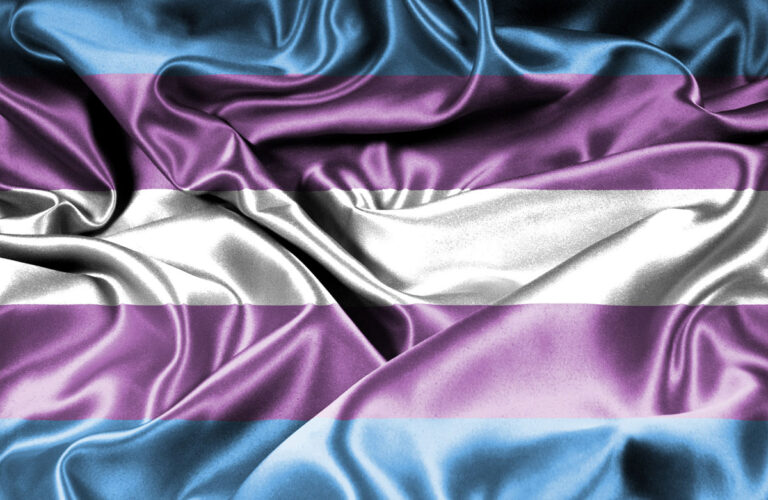7 steps you can take to be an ally to trans people

Today is International Transgender Day of Visibility, a day dedicated to celebrating transgender people and raising awareness of the discrimination they face worldwide, as well as a celebration of their contributions to society. Today is about more than visibility—it’s about encouraging others to take part in the fight against transphobia and do as much as they can to create a trans-inclusive society. That’s why, whether you’re already working towards this goal or not, we’ve created an introductory guide to being a good ally to trans people, so you can either catch up on the steps you should have taken a while ago, or simply share it with other people who might not be there yet.
1. Listen to trans people
This one might seem obvious to some of you, but being able to listen to someone’s journey and struggles is the most important step towards understanding the unfairness they’re victims of and helping them. In order to be a good ally to trans people, make sure you’re actually centring them instead of you and the role you play in the fight for trans inclusivity.
Of course, listening in allyship means more than just hearing what a trans person says when something is wrong—it means that there is a continuous conversation happening and action being taken about things that may affect trans people, such as the language people use, having bathrooms accessible to people of all genders, and creating an environment that feels safe for trans people to vocalise their issues.
Everyone’s experience is different, and the same applies to trans people. When you listen to them, don’t take a one-size-fits-all approach. Ask them how best you can help them instead, and listen! “People come from different backgrounds and have different experiences, and therefore have different needs,” writes GLAAD.
2. We all make mistakes
As an ally, you’re bound to mess up somewhere. That’s okay, as long as you’re ready to apologise, learn from it, and move on. Constantly working towards educating yourself is key here. However, there are a few things you really need to avoid in order to be respectful and considerate. When using someone’s wrong pronouns, don’t try to justify yourself by saying something along the lines of ‘I’m just not used to using this pronoun yet’. Just listen to whoever is correcting you, apologise, and acknowledge that you’ve got the hang of it from now on. No need to make things awkward with your friend, just continue the conversation using the right pronouns this time.
3. Just because you don’t understand an identity doesn’t mean it doesn’t exist
Just because you’ve never heard about certain identities before does not mean that they’ve never existed. Resources to understand trans people and all the specific identities that are under the trans umbrella exist. It isn’t something that you will become fully aware of overnight, and that’s okay, but what matters is that, as an ally, you make sure you are putting in effort to learn and understand.
That being said, trans people don’t owe you anything, which means that they don’t necessarily have to be the ones teaching you more about queerness and transness. It’s up to you to make the effort of researching whatever questions you need answered. Having to explain your identity can be extremely emotionally and mentally laborious. If anyone takes the time to explain their identity to you, make sure to not take that for granted.
4. State your pronouns
Easy one. Introducing yourself along with your pronouns can make a more inclusive and safe environment for trans people to also share their pronouns. By normalising the practice, you not only lighten the pressure on trans people but also lower the chances for unintentional misgendering to happen.
You can also add your pronouns on your social media bios or in your email signature to help foster a more trans-friendly social media environment.
5. Use gender inclusive language
Society has taught us to use some gender-exclusive terms such as ‘guys’, ‘bro’ or even ‘sis’. Changing some of the words that you use can make a better, more trans-inclusive environment. Saying ‘Hey y’all’ or ‘Welcome everyone’ is a good start.
Same applies to topics like reproductive health. For example, “take the ‘feminine’ out of ‘feminine hygiene products’,” writes GLAAD. You can also just say pads and tampons. This distinction is a reminder that many trans men and non-binary people also have periods and use these products, implying that there is nothing feminine about these objects.
6. Don’t make assumptions about a transgender person’s sexual orientation
Gender identity and sexual orientation are two different things. Sexual orientation is about who we’re attracted to, and gender identity is about our own personal sense of being a man or a woman, or neither of those binary genders.
7. Show up for the trans community and champion trans voices
Finally, it’s important to understand that allyship doesn’t end there. Showing up for the trans community by going to rallies and protests for trans people is crucial. Use your own privilege to uplift trans voices and bring awareness to their issues. Donate to various non-profits centring trans people if you can.
You can check out GLAAD’s list of resources for transgender people and their allies. If you work in the media industry, check GLAAD’s list of resources for covering transgender people in the media. Furthermore, if you see defamation of trans people in the media, report it! You can also find more ways to be a good ally here.
Happy International Transgender Day of Visibility 2021!





